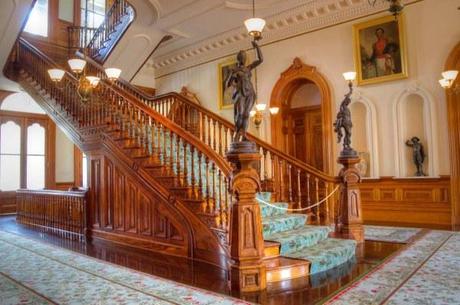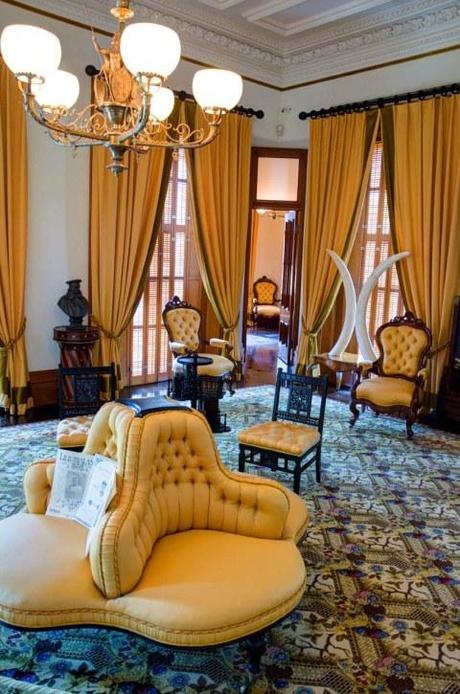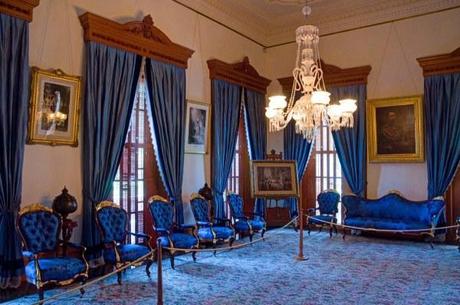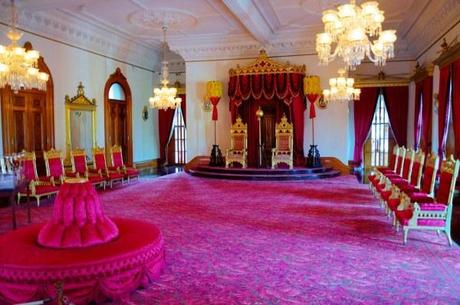
It’s good to be the king.
When David Kalakaua ordered a new palace built in 1879 in Honolulu, the Hawaiian kingdom’s capital and an increasingly important hub for international trading, the monarch mandated that no expense be spared. The building was intended to impress, lest overseas VIPs think his realm in the middle of the Pacific was a backwater.
Iolani Palace was decked out with cutting-edge amenities like indoor plumbing, a telephone, and electric lighting, which it had before the White House or Buckingham Palace. Constructed in a unique architectural style, the building melds European-inspired features with traditional Hawaiian elements such as wide, wrap-around lanais.
The only official state residence in the U.S. once occupied by royalty, Iolani Palce looks like the domain of an Italian duke rather than a dwelling in the tropics. While admiring the architecture and décor is reason to visit the residence, it’s more than just a pretty façade. Roaming its gilded rooms with a self-guided audio tour reveals intriguing stories about what played out within them, well before Hawaii became the 50th U.S. state.
Grand Hall

When illustrious guests like Scottish novelist and adventurer Robert Louis Stevenson arrived at Iolani Palace, they crossed the threshold into the Grand Hall. Competing for attention in the entryway are a staircase crafted from koa, a wood endemic to Hawaii (and soft enough that present-day visitors are required to wear booties over their shoes to protect the floor); portraits of Hawaiian kings and queens; and statuary and other adornments from far-flung locales.
Gold Room/Music Room

The royal family gathered in this chamber to revel and to kani ka pila (make music). King Kalakaua’s fondness for a good party and his patronage of the arts—including encouraging a revival of the hula, once barred by missionaries—earned him the nickname the “Merrie Monarch.” An avid traveler and the first-ever king to circumnavigate the globe, he received the two-tusked table in the background as a gift on his fiftieth birthday.
Blue Room

This “modest,” sapphire-hued parlor was where smaller or more informal gatherings took place, and where guests cooled their heels while waiting to be summoned for an audience with the monarch.
Throne Room

Once the site of diplomatic receptions and other big galas, this lavish space was turned into a courtroom for the trial of Queen Lili‘uokalani, who ascended to the throne in 1891 upon the death of King Kalakaua, her brother. After proposing a new constitution that would strengthen the monarchy, she was overthrown by an opposing group of foreign businessmen and local sugar plantation owners who feared a loss of influence and a hit to their wallets.
The coup was backed by the U.S. Foreign Minister, who called in the Marines to assist, and ended royal rule in Hawaii. After an unsuccessful attempt to regain power, the queen surrendered to avoid bloodshed and was imprisoned for eight months in an upstairs bedroom at the palace—a dark side beneath the glitz and glamour.
21.306715 -157.858760
